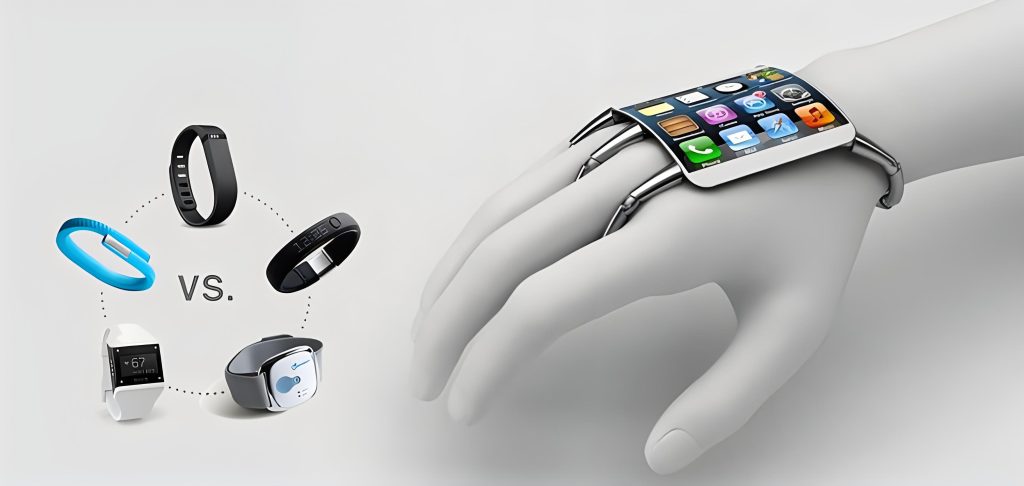Haptic Feedback Fashion: A Sensory Revolution
 In the ever-evolving landscape of fashion and technology, a sensory revolution is underway – the advent of haptic feedback fashion. Beyond visual aesthetics, this innovative trend introduces a tactile dimension to clothing, transforming the way we experience and interact with our garments. Welcome to the era of Haptic Feedback Fashion, where touch becomes a new frontier in the exploration of style and sensory engagement.
In the ever-evolving landscape of fashion and technology, a sensory revolution is underway – the advent of haptic feedback fashion. Beyond visual aesthetics, this innovative trend introduces a tactile dimension to clothing, transforming the way we experience and interact with our garments. Welcome to the era of Haptic Feedback Fashion, where touch becomes a new frontier in the exploration of style and sensory engagement.
At the heart of haptic feedback fashion is the integration of tactile sensations into clothing. Haptic technology, which simulates the sense of touch through vibrations, pressure, and motion, is being seamlessly woven into the fabric of garments. The result is a multi-sensory experience that goes beyond the visual appeal of clothing, engaging our sense of touch in ways previously unexplored.
The applications of haptic feedback in fashion are diverse and innovative. From simple vibrations to complex patterns of pressure, haptic technology allows clothing to communicate information, evoke emotions, and enhance our overall sensory experience. Imagine feeling a gentle vibration on your sleeve to alert you to an incoming message or experiencing a soothing pattern of pressure as you navigate through a virtual reality environment.
One of the key advantages of haptic feedback fashion is its potential to enhance accessibility. Beyond visual and auditory cues, individuals with visual or auditory impairments can benefit from tactile feedback incorporated into clothing. This inclusivity ensures that fashion becomes more than just a visual statement; it becomes a means of communication and expression for individuals with diverse sensory experiences.
Haptic feedback is making its mark in the realm of interactive fashion. Garments are now equipped with sensors and actuators that respond to external stimuli or user input. For example, a dress may change its texture or emit vibrations in response to music, creating a dynamic and interactive fashion experience. This intersection of fashion and interactivity blurs the line between clothing and art, turning garments into dynamic canvases.
In the realm of virtual fashion, haptic feedback plays a pivotal role in bridging the gap between the physical and digital worlds. Virtual fitting rooms equipped with haptic technology allow users to feel the texture and fit of virtual garments before making online purchases. This tactile preview enhances the online shopping experience, mitigating concerns about the tactile qualities of fabrics that may be lost in the digital translation.
Beyond functionality, haptic feedback fashion explores the emotional and experiential aspects of clothing. Designers are experimenting with haptic elements to evoke specific emotions or sensations. A dress may pulsate with a calming rhythm, or a jacket may simulate the feeling of a gentle breeze against the skin. These innovations go beyond traditional notions of clothing, transforming garments into wearable experiences.
The gaming industry has also embraced haptic feedback fashion to immerse players in virtual worlds. Gaming apparel equipped with haptic technology allows players to feel the impact of in-game actions, whether it’s the recoil of a virtual weapon or the sensation of raindrops in a simulated environment. This convergence of gaming and fashion creates a heightened and more engaging player experience.
Despite the exciting possibilities, challenges exist in the widespread adoption of haptic feedback fashion. Technological constraints, concerns about durability and washability, and the need for standardized haptic interfaces are among the hurdles that the industry is actively addressing. Overcoming these challenges will be crucial for the seamless integration of haptic technology into everyday fashion.
In conclusion, Haptic Feedback Fashion represents a sensory revolution that expands the boundaries of our interaction with clothing. As technology continues to advance, the tactile dimension of fashion opens up new possibilities for creativity, accessibility, and personal expression. In this era, clothing becomes more than just a visual statement; it becomes a dynamic and interactive extension of our senses. Welcome to the future of fashion, where touch is a key player in the exploration of style and the sensory revolution is unfolding in the garments we wear.








